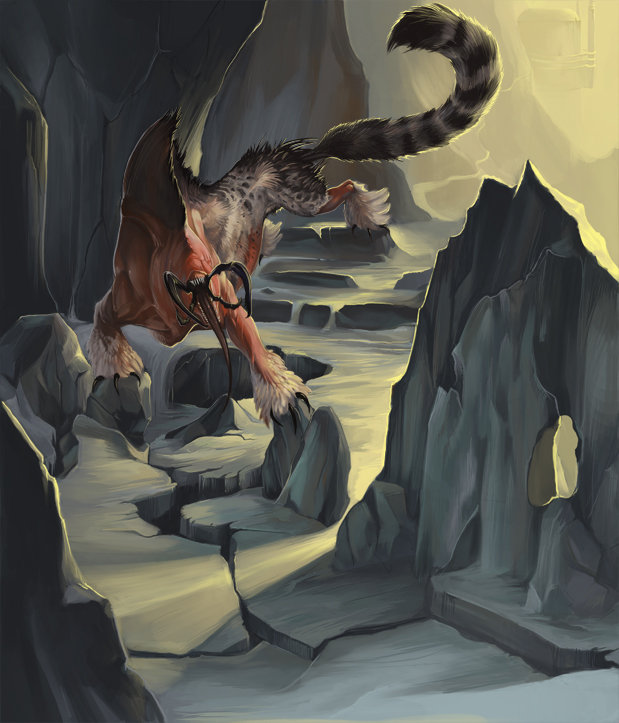I’ve talked about it, I’ve tweeted about it and now here it is: my first post in a series about reskinning monsters. I think this is one of the simplest and most powerful tools in the GM’s toolbox.
Put plainly, reskinning means to take the stats or abilities of a creature but describe it differently. It’s when your PCs encounter a long serpentine crocodile with a red lion-like mane, but you use the stats for a generic wolf. If the wolf can trip, your crocolion can chomp down on character’s legs and snap them to the ground. If the wolf has some sort of howling ability, make it a fearsome roar instead.
Most of the time, your players will never know the difference and they’ll be entrance and in-awe of this weird new monster they’ve never seen in all your monster books and supplements. It also has the benefit of them not getting the upperhand on you through player knowledge. “Oh, watch out guys, wolves can trip you”. If it doesn’t look like a wolf, they won’t immediately know its abilities.
There’s a lot more to it than that though. You can have a lot of fun with it and step-by-step build up an unique monster with ecology, tactics, weakness and strengths actually quite different that the base creature. In this post, we’ll take a look at the basics and reskin a creature as we go. I’ll follow up this article with a deeper look at other aspects of reskinning.
Start with Art
I follow a lot of cool artists on Deviant Art and I recommend every GM interested in monsters subscribe to the RSS feed at Creature Spot, too. I often see great pieces of art for unusual creatures and think, wow, I want to use that in my game. You don’t have to painstakingly come up with balanced stats for every cool new piece of art you find. Reskinning solves that for you. I recommend starting with art, as it gives you a good idea of what you’re going for and also gives you something that you can show to your players and say, “You see this!”
For the purposes of this post, I’m going to reskin a monster as I go, to show how easy it is. I’ve just jumped onto Creature Spot and found this nasty, weird looking beastie, by Allison Theus a.k.a. beastsofoblivion. Click the picture for a bigger version at her Deviant Art page.

So, here we’ve got a beast “comprised of bits of boar, hyena, leopard, lemur, owl, and beetle”, to quote the artist. For stat purposes, I’m thinking the leopard and beetle parts are the most important. Basically, now we look for something that would resemble that, stat-wise. Opening up my Pathfinder Bestiary I look for leopards and, hey, there is one! If you want to play along at home, here’s a link to to the leopard’s stats. Let’s see, it has bite and claw attacks and it can pounce, rake with claws and grab with mouth. Perfect!
The body is most leopard like, so it’s a good base. It’s wicked claws already have a linked attack, so that’s great. But that crazy beetle maw is a different matter. If you look at the leopards stats, it has a bite that allows it to grab smaller creatures if it hits. See the long, tongue-like bit on the picture of of the new monster? I’m gonna say that it’s a prehensile tongue with sharp barbs like a combination of a cat’s tongue and fishhooks.
So, now when I describe this thing attacking with the ‘bite’ attack and succeeds on the grab, it’ll sound a bit like this: “The creature makes a low clicking snarl in its throat and lunges at you, piercing your flesh as it clamps down with its sharp mandibles. You feel its barbed tongue hooking in and latching onto your skin”.
Ouch! That’s the same attack, just described differently. It acts exactly the same and does the same damage. It’s all colour and flavour that makes reskinning so effective.
It only took a few minutes, but I really think this critter’s ready to go. Wasn’t that easy? It is statistically identical to the leopard, but it’s a lot more interesting thanks to the art and the description – they are the key to this whole thing – and players will really wonder what the hell they’re up against. I’m going to finish this post here, as an introduction to reskinning.
Join me next time as we look at how we can tweak the habits, habitats, tactics and other elements of reskinned creatures to make them even more different than the base creature.